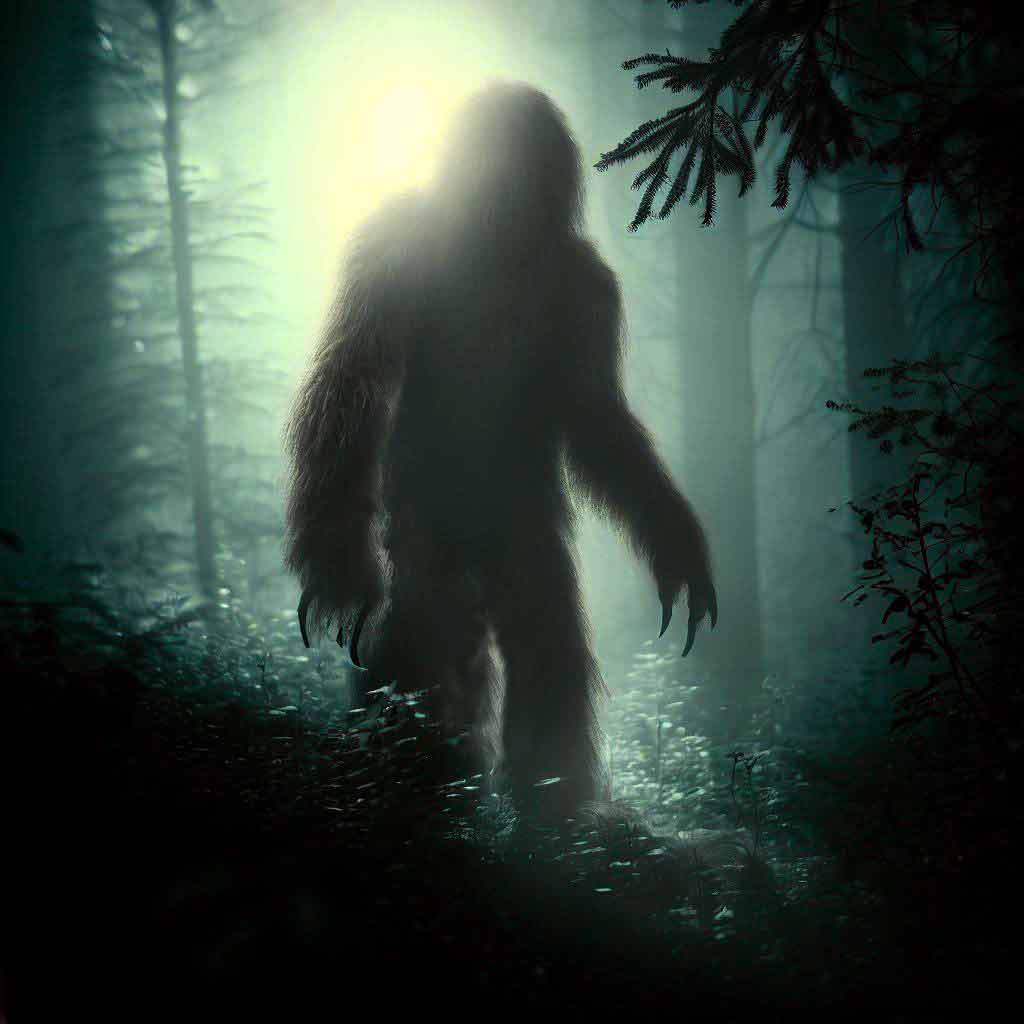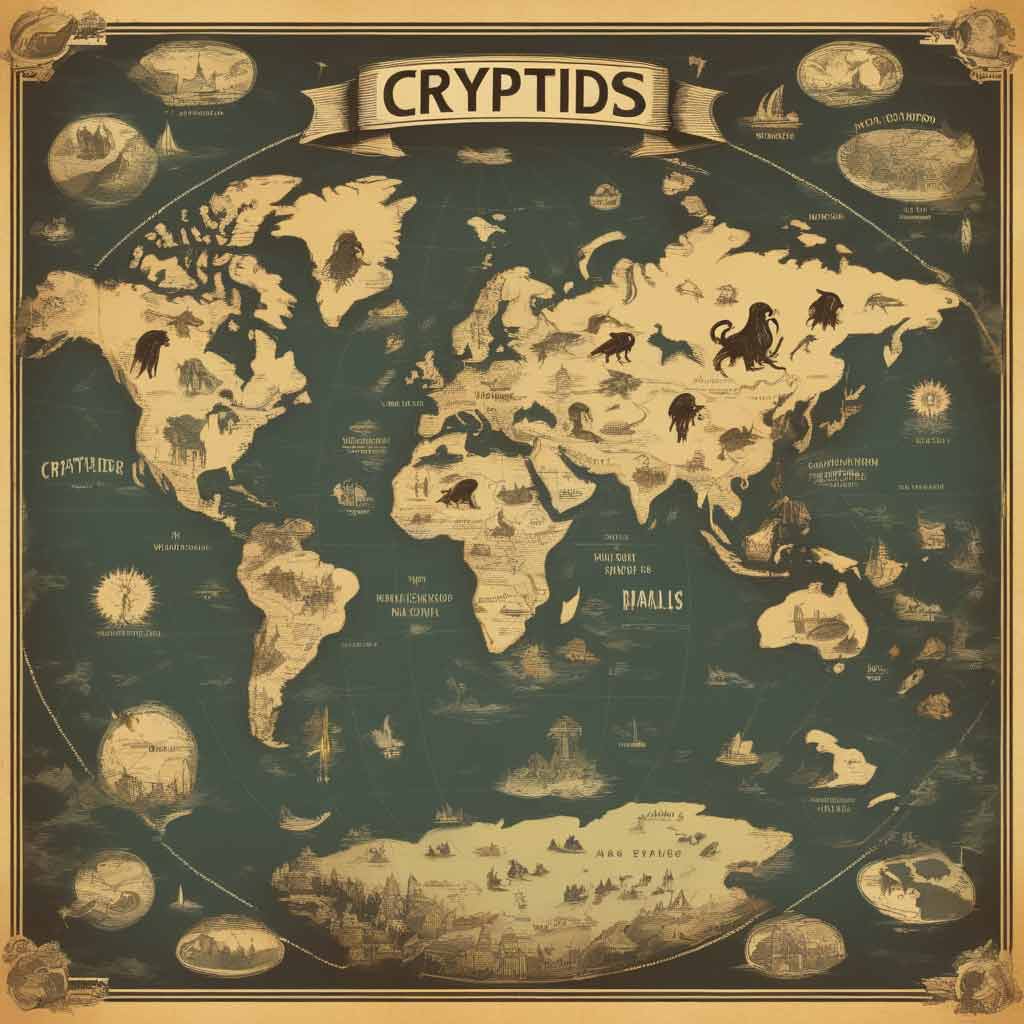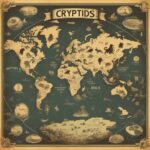Cryptozoology is the fascinating study of legendary, mythological, or unknown creatures and animals who are rumored to exist, but have never been proven to be real… yet!
These creatures are commonly called “Cryptids” and they can be found in legends, folklore, myths, and urban tales from all over the world. Some famous cryptids include Bigfoot, the Lochness Monster, and the Jersey Devil.
Cryptozoology as a discipline has its roots in ancient times when stories of mythical creatures were often used to explain natural phenomena or supernatural events. It wasn’t until the 19th and 20th centuries that cryptozoology began to take shape as a distinct field of study. It, however, is often seen as a pseudoscience that sometimes isn’t taken very seriously by the scientific community. That said, there are many creatures that were once folk tales that have since been found to actually exist so cryptozoology certainly can’t be ignored!
Cryptozoology Definition
There are a couple of definitions for cryptozoology that you will find but I think the Merriam-Webster Dictionary sums it up best:
the study of and search for animals and especially legendary animals (such as Sasquatch) usually in order to evaluate the possibility of their existence.
Merriam-Webster Dictionary
How To Pronounce Cryptozoology
Cryptozoology is broken down into two syllables, “crypto” and “zoology”. Crypto means “a hidden or secret place” and it is pronounced exactly like you would pronounce crypto in “cryptocurrency”.
The second syllable is “zoology” and it means “the study of animals”.
The word “Cryptozoology” is therefore pronounced like this:
crypto – zoo – ology
What Are Cryptozoologists?
Cryptozoologists are people who investigate and study creatures (cryptids) that are said to exist but have not been officially recognized by mainstream science. They are the real-life monster hunters who gather evidence and information to prove that these unknown creatures are in fact real.
However, unlike traditional sciences, there or no standardized academic or professional requirements that someone needs to become a cryptozoologist. While some cryptozoologists have backgrounds in fields such as biology, zoology, anthropology, and ecology, there are many who simply have a passionate interest in cryptozoology without any formal scientific training.
Click here if you would like to learn more about cryptids!
What Does A Cryptozoologist Do?
Cryptozoologists work to prove the existence of Cryptids and their work can include:
1. Research and Documentation
Cryptozoologists will collect and analyze reports, eyewitness testimonies, and historical accounts of cryptid sightings. They compile comprehensive databases of information to understand and journal the characteristics, behaviors, and habitats of cryptids that are reported.
2. Field Study
Cryptozoologists will often visit places where cryptids have been sighted. They will try to find physical evidence such as footprints, hair samples, or anything else that would prove the existence of the creature reported.
3. Data collection
Cryptozoologists will use things like camera traps, audio recordings, and specialized equipment to gather data to support the existence of Cryptids. The data collected can include things like photos, videos, audio, as well as environmental data.
4. Analysis
Cryptozoologists evaluate any evidence they find and they will analyze possible alternative explanations in order to maintain a balance between open-minded exploration and science.
5. Collaboration
Cryptozoologists will often work with other researchers, scientists, and enthusiasts to share information about the creatures that they are studying. They often attend conferences, seminars, and workshops related to cryptids so that they can network with others who are passionate about cryptozoology.
6. Education
Many cryptozoologists will also work with the public to raise awareness about cryptids and their potential existence and this could involve things like giving presentations, writing articles, being guests on podcasts, and appearing in documentaries.
The History Of Cryptozoology
Cryptozoology can be traced all the way back to ancient civilizations where mythological creatures were often described in stories and folklore. However, the modern concept of cryptozoology only started taking shame much later when the study of natural history became more popular and scientists began to discover and record new species of animals.
The Beginnings of Cryptozoology
The history of cryptozoology is truly fascinating! It intertwines mythology, cultural beliefs, and folklore that reach back all the way to the beginning of humankind. Throughout history, there have been thousands of tales of mysterious and unknown creatures that have been recorded in the stories, legends, and cultures of ancient civilizations with many of them still enduring today.
As humanity began to evolve and travel to new lands they encountered many animals that were new and bizarre, which often added to the myths and legends that surrounded their adventures. During the Renaissance period, explorers began to record and catalog the animals that they found, including those that were originally considered to be legends.
Modern Cryptozoology
The name “Cryptozoology” was first used in the mid-1900s by two zoologists, Bernard Heuvelmans and Ivan Sanderson who were pioneers in the subject arguing that cryptozoology was its own distinct field of study that needed its own methodologies and approaches to investigation and study.
In the 1960s and 1970s, the field gathered momentum with the rise of interest in mysterious creatures such as Bigfoot, the Loch Ness monster, and Yeti. During this time some cryptids, like the giant squid and the Okapi, moved from being legends into confirmed scientific reality as methods of research and gathering evidence improved.
These days it is a lot easier for cryptozoologists to investigate and document potential cryptids using modern technology such as remote sensing, satellite imagery, and DNA analysis. The internet and social media have also facilitated the sharing of eyewitness accounts, photos, and videos leading to more interest and awareness around cryptozoology.
While there is still a lot of skepticism around the validity of cryptozoology, many enthusiasts encourage an open-minded approach while others emphasize critical analysis with both groups relying on fieldwork, research, and technology to help them discover new species.
Don’t Forget To Check Out Our
Interactive Cryptid Map
With Cryptids Found On Every Continent!
Why Is Cryptozoology Considered To Be Pseudoscience?
Cryptozoology is often considered to be a pseudoscience because it is surrounded by skepticism and often lacks evidence and proof. In most cases, evidence is based on personal accounts, eyewitness testimonies, blurry photos, and inconclusive evidence rather than systematic research or scientific studies. This evidence is often very subjective and open to interpretation and can easily be influenced by personal biases, perceptions, and emotions which means that it is less reliable than evidence gathered through controlled experiments.
Unfortunately, sometimes some of the evidence collected has been proven to be fake. And even in cases where the evidence has been found to be real, it can be difficult to properly authenticate it even with all the modern technologies available to us. This means that for many, cryptozoology is often compared to the study of UFOs, ghosts, and other forms of paranormal fields.
All that said, despite the lack of scientific evidence, cryptozoology is an incredibly popular subculture filled with passionate enthusiasts and hobbyists who immerse themselves completely in the study of cryptids!
Conclusion
Whether or not you believe in cryptids and cryptozoology it certainly can’t be definite that cryptozoology is a fascinating field of study! It is a reminder that despite our scientific advances, there is still so much that we don’t know about the world around us! And of course, who doesn’t love a mystery!






